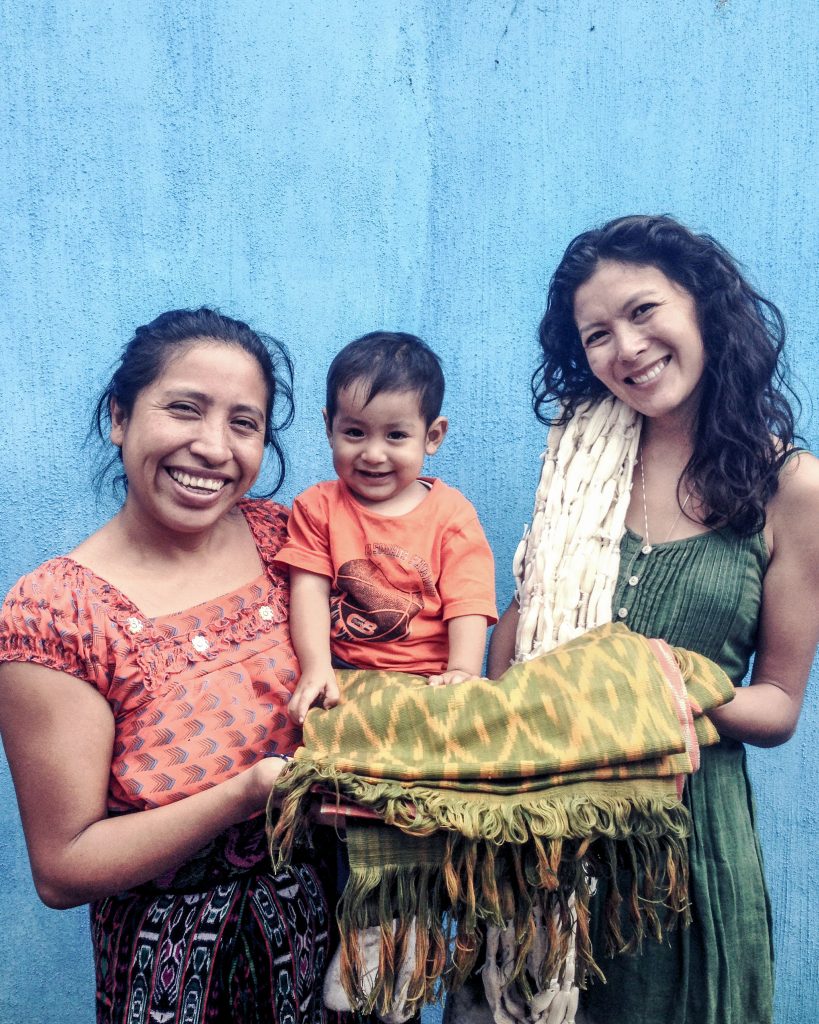Textile Travels to Guatemala
I’ve found myself in a little pickle as the founder of Kakaw Designs, a small artisan made brand based in Guatemala, and now also a master’s student in Sustainable Development in Europe. It seems to me that conscious consumers are more and more focused on the environmental side of fashion, pushing for locally-made products and a general reduction in consumption. While I am a big supporter of these movements and personally believe that More is not always Better, these trends lead me to wonder about the social and economic side effects for the small-scale producers that I’ve worked with for years now in Guatemala.
The world of ethical fashion can be complex. While traditional Maya weavers in Guatemala benefit from the sale of their products to foreign markets and peoples, there is also a movement to protect the traditional designs as intellectual property. That’s because when textiles are sold through middlemen as they often are, it’s not clear how much the real weaver makes in the transaction. Transparency is important for small-scale producers, too. So combine these ethical issues of taking indigenous designs out of their original context with the local movements in the developed world that call for limiting international trade, and I’m worried for the future of the textile traditions and in general all of the artisans in Guatemala. Will weavers be able to continue their art if there is less international interest?
Working closely with artisans for years now, these thoughts have been circling in my head. That’s part of the reason why I chose to go back to school and to gain a better perspective from outside Guatemala to see the possible next steps are for the rural artisans. I am in no way near having the answers but am enjoying exploring the possibilities. As part of Kakaw Designs, we’re also excited to introduce a new branch that we believe can be truly beneficial for rural artisan groups even more than through economic support via small-batch orders: Textile Travels for Makers.
It didn’t take long to notice that our partner artisans are hungry for new creative ideas – for new designs, colors, anything that will set them apart from other producers. That’s why it’s so much fun to try out new products with our partner artisans – because they sincerely get excited for the possibilities. But it took me a little longer to notice that our customers were themselves often creative types, practicing knitting, quilting, dyeing, sewing, or other forms of fun textile arts. It makes sense, because we’re a textile-loving brand; of course our customers would be textile lovers, too. This summer, we’re excited to put these two groups of people together through textile workshops in the artisans’ communities. We will learn from each other and add even more to this producer-consumer relationship. We will add faces, names, and hopefully friendships. The artisans will be encouraged to continue these new ideas on their own, and we hope that this will give them the edge they need to increase their sales in Guatemala, and perhaps even connections to sell abroad through the participants. One thing is for sure: we will have a great time, and we will all learn from each other.
while weavers benefit from sales to foreign markets, there is also a movement to protect the traditional designs as intellectual property
Transparency is important for small-scale producers, too.



